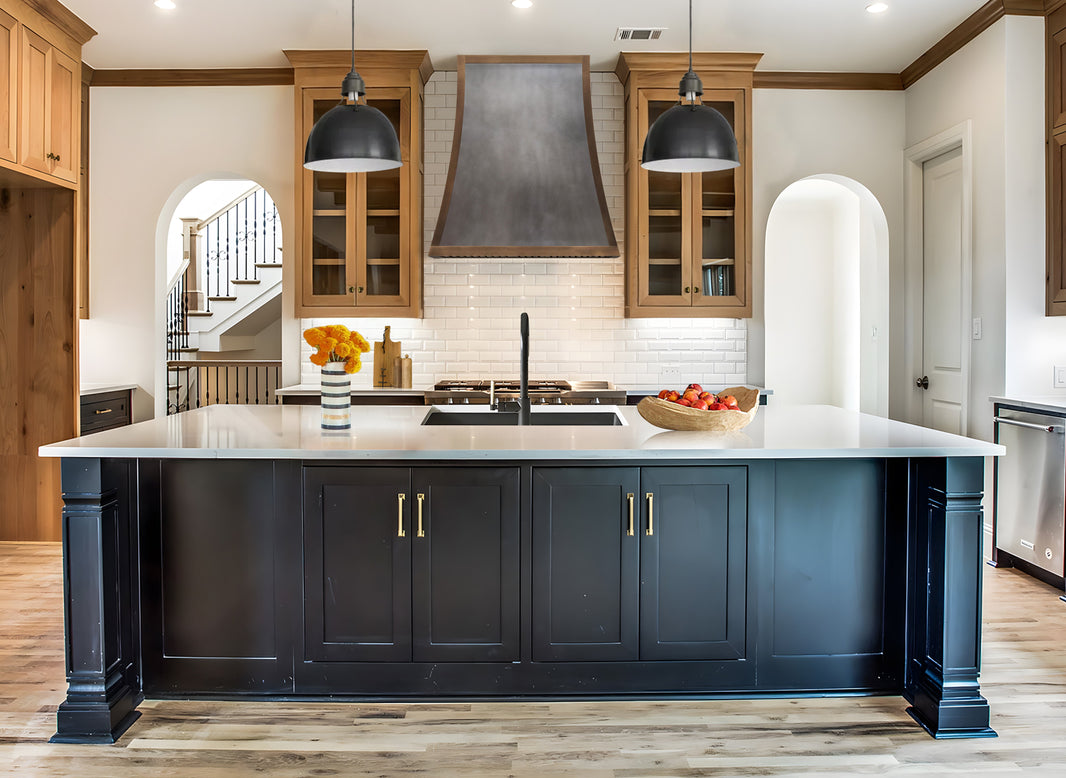When shopping for a range hood, many people prioritize aesthetics, brand, or airflow power—only to overlook the most critical factor: size compatibility. After buying, they realize the hood either doesn’t fit into the pre-reserved cabinet space, lacks enough depth to cover the stove burners (letting smoke escape everywhere), or even requires breaking and modifying cabinets during installation—wasting time, money, and effort.
In reality, a range hood’s size isn’t about “bigger is better” or “smaller saves space.” It needs to precisely match your stove, cabinets, and cooking needs. This article breaks down the core logic of choosing the right size: from key dimensions and the impact of pre-renovation space, to how size relates to installation and airflow performance, plus actionable steps. By the end, you’ll pick the perfect size for a range hood that’s both functional and stylish.
The 3 Core Dimensions of a Range Hood
Before choosing a size, you need to clarify three key parameters of a range hood: Width (W), Depth (D), and Height (H). These directly determine if the hood will fit and work well—let’s break them down one by one:
1. Width (W): Follow the Stove, Slightly Larger Is Better
Width is the most visible dimension of a range hood, and the core rule is: Range hood width ≥ Stove width to prevent smoke from escaping the sides of the stove.
• Most residential stoves are 30 inches or 36 inches wide (for single or double burners), so range hoods typically come in these sizes too. Larger homes or commercial kitchens may use 42-inch hoods.
• For example: If your stove is 36 inches wide, a 36-inch range hood fits perfectly. If there are cabinets around the stove, you can opt for a slightly wider one—but don’t go too wide, as it will stick out from the cabinets and ruin the look.
2. Depth (D): Cover All Burners, or Smoke Control Fails
Depth is the easiest parameter to ignore, yet it directly affects smoke extraction. It refers to the distance from the front of the hood (near the cabinets) to the back (near the stove). The key requirement is: Range hood depth must cover all burners, and ideally extend 1-2 inches beyond the burner edges.
• Why? The hood’s air intake is concentrated under the unit. If the depth is insufficient, the burners on the stove’s edges will be outside the smoke-suction range. When cooking, smoke will drift sideways—even a high-powered hood won’t help.
3. Height (H): Balance Installation Distance and Cabinet Space
Height has two parts: the hood’s own height (e.g., 48 inches) and the vertical distance from the hood to the stove (24-30 inches for under-cabinet hoods, 18-24 inches for wall-mounted/side-suction hoods).
- When choosing height, meet two conditions: ① The hood’s height fits into the reserved cabinet space (e.g., if the cabinet’s internal height is only 45 inches, a 48-inch-tall hood won’t work); ② The installation distance from the stove meets safety standards (too close risks overheating the hood, too far reduces smoke extraction efficiency).
Myth: Size ≠ Airflow Performance—Don’t Blindly Choose a Large Hood
Many people think “the larger the range hood, the better the airflow”—but this is a common misconception. Airflow performance depends on motor power, duct design, and smoke-collecting structure—not just size.
- For example: A 30-inch range hood with a 1200 CFM motor (CFM = cubic feet per minute, the unit for airflow), straight duct design, and a smoke-collecting hood that wraps the stove will perform better than a 32-inch hood with a 1000 CFM motor and curved duct (which traps smoke).
So, remember this when choosing size: First confirm the size (to match the stove + cabinets), then check airflow (to match your cooking habits). Combining both gives the best result.
Worried About “Size Mismatch”? Customization Is the Best Solution
Even if you measure step-by-step, you may face “special cases”: an irregularly sized stove, non-standard cabinet space, or a desire to match the hood to your overall kitchen style. In these cases, a custom range hood is the better choice.
Take CKH’s custom range hoods, for example—we tailor the width, depth, and height to your stove size, reserved cabinet space, and burner position:
- If your stove is an irregular 38 inches wide, we can make a 38-inch-wide hood to ensure full coverage;
- If your cabinet depth is only 20 inches but your burners span 19 inches, we’ll craft a 20-inch-deep hood that fits the cabinet and covers all burners;
- We even pair the hood with a motor power that matches your airflow needs, avoiding the waste of “large size + low airflow.”
Custom range hoods are like tailored clothes: they fit perfectly into cabinets, cover burners precisely, maximize smoke extraction, and blend with your kitchen’s style. No more rework from ill-fitting sizes, and no need to compromise on aesthetics or function.
Choosing the right size of range hood can not only avoid the trouble of installation and rework, but also maximize the smoke exhaust effect and keep the kitchen fresh. If you are still struggling with the size, or if you have a special-shaped stove or special cabinet space at home, you might as well try customization - "tailor-made" according to your kitchen, so that you can truly achieve "coexistence of appearance and practicality".
Contact us now to share your stove size, cabinet space and cooking needs, and let us customize a range hood that fits you perfectly!




